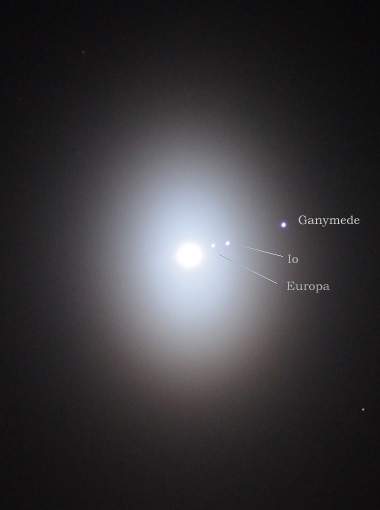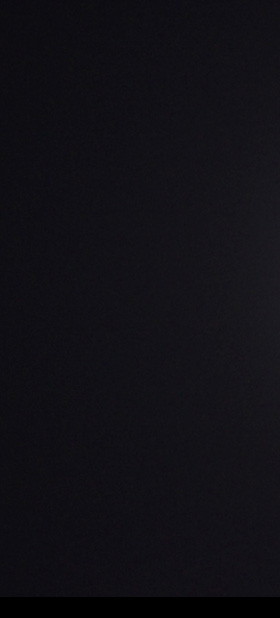 |
 |
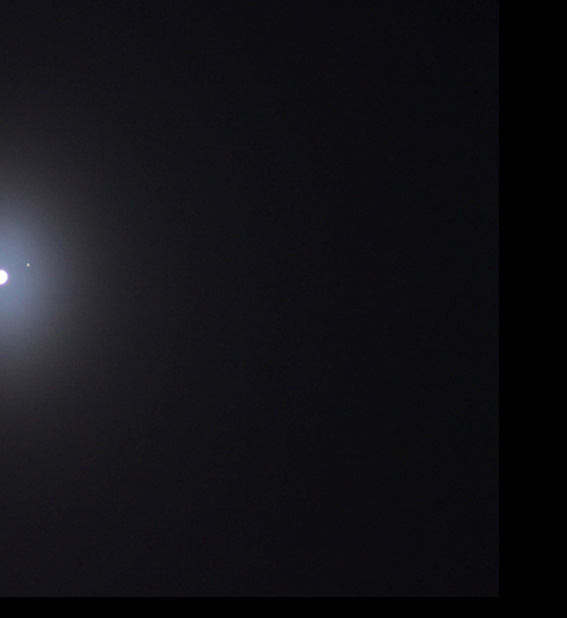 |
| Jovian Puzzle ~ Tamás Ladányi (site, TWAN) imaged Jupiter with its four Galilean moons (left to right Callisto, Europa, Io and Ganymede) on Aug 23, 2010. Surrounding Jupiter is an aureole that is distinctly elongated in the vertical direction. More pictures below. All images ©Tamás Ladányi, shown with permission. |
| Larger aureoles occur around the Sun and Moon. Those are produced by light scattered by dust and aerosol. They can be regarded as diffraction coronae from very small particles with a wide range of sizes. The usual coloured rings are blurred away by the overlap of individual and different sized coronae. The Jupiter aureoles present two puzzles. Firstly their size. Unless they are merely the very bright central part of a larger aureole (unlikely from their appearance and colour fringe), they must be produced by much larger bodies than their solar or lunar counterparts. We can get a rough idea of the particle size from scattering theory. Jupiter's mighty equatorial diameter of 11.2 Earths subtended 48.5 seconds of arc. That provides an image scale and gives the aureole 'diameter' of about 0.1° in the top image. The scattering particles were of the order of 0.5 mm across! The second puzzle is the vertical elongation. Vertically elongated planet aureoles are real. They have been seen before around bright Venus by Doug Zubenel, Tamás Ladanyi and Monika Landy-Gyebnar. A non-circular aureole or corona implies oriented non-spherical particles. Pollen grains produce them as in this picture of Lunar and Venusian coronae. But pollen grains do not come in 0.5 mm sizes. Another possibility is ice crystals in high cirrus. Plate and column crystals are naturally aligned and to light from an object low in the sky (Jupiter was only 21° high in the top image and 18° at right) would appear as horizontally elongated scattering objects. These would produce the required vertically elongated aureoles. The sky had cirrus in the top image with perhaps some altostratus/altocumulus. However the Moon was out and we might expect crystals of that size to produce halos ~ none were seen. Cirrus was also present at right. The lower sequence, taken over a period with different cloud crossing Jupiter, shows that the aureole presence, size and shape is cloud related. More observations are needed with careful note of the sky conditions. It would be interesting to image aureoles near simultaneously from high and low altitude objects. Those from the high object should always be circular. |
| This second aureole was imaged on August 29, 2010. Below is a sequence of images taken on the same night showing the variation in aureole size and shape as clouds passed over. |
 |
 |
 |

| About - Submit | Optics Picture of the Day | Galleries | Previous | Next | Today |
 |
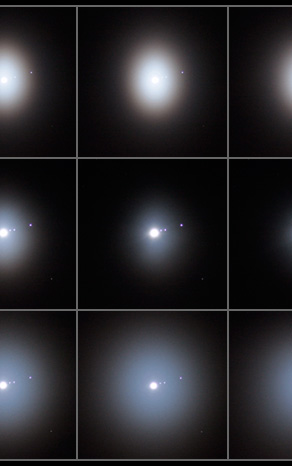 |
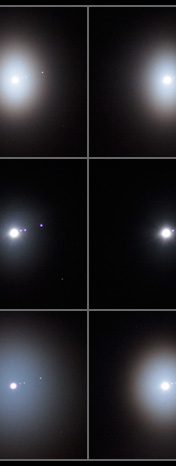 |
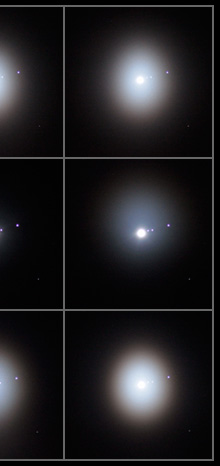 |
